INDEX
The train doors slid open at Shinjuku Station, and a wave of people, sounds, and neon light hit me. My careful plans suddenly felt useless.
I had been to 30 countries before my first trip to Japan, but I felt completely lost and small. Being overwhelmed in Tokyo solo wasn’t just a possibility; for that first hour, it was my reality.
That initial shock is a common story. But I learned that the feeling doesn’t have to last.
With a few strategic choices, you can quickly move from anxious to confident. This guide gives you the exact, practical steps I used to find my footing and begin one of my best solo trips ever.
Why Feeling Overwhelmed in Tokyo Solo Is Completely Normal
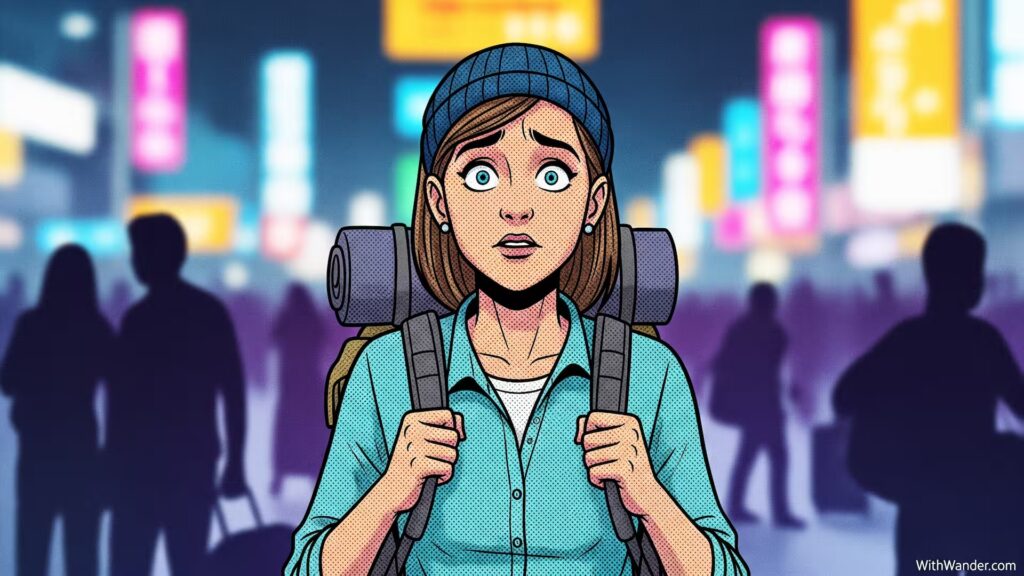
The feeling of being a first time in japan feeling anxious traveler is valid, and our comprehensive Japan Travel Guide can help prepare you for the basics.
Tokyo operates on a scale that few other cities can match. The train maps look like complex circuits, thousands of people move in sync across intersections, and sounds come from every direction.
It’s sensory overload by design. But this intensity is also part of what makes the city incredible once you find your rhythm.
According to the JR East official website, the Yamanote Line alone carries approximately 4 million passengers daily, making it one of the world’s busiest urban rail systems.
The key is not to fight the feeling, but to give yourself simple, concrete tools to manage it from the start.
💡Your First Goal: Simplicity
Don’t try to conquer all of Tokyo on day one. Your only mission is to get from the airport to your accommodation, find a simple meal, and rest. Everything else can wait.
4 Practical Tips to Regain Your Footing

When anxiety hits, you need a plan. Not a complex itinerary, but a few simple rules to ground yourself. These four strategies are my go-to methods for turning chaos into manageable energy.
1. Master One Train Line, Not the Whole System
Tokyo’s complete train map is intimidating. So ignore it. For your first few days, focus only on the JR Yamanote Line (the light green one).

It’s a loop line that connects most of Tokyo’s major hubs like Shibuya, Shinjuku, Ueno, and Tokyo Station. By sticking to this one line, you simplify navigation to a circle. You literally can’t get lost for long; if you miss your stop, just stay on, and it will come back around.
Get a Welcome Suica card from any station machine or JR Travel Service Center. As of October 2025, these tourist cards cost ¥1,500 (with no deposit fee) and are valid for 28 days.
For iPhone users, you can add a Mobile Suica directly to your Apple Wallet for even more convenience.
Load it with ¥2,000, and you can tap in and out of gates without worrying about buying individual tickets.
2. Find Restaurants with Minimal Interaction in Tokyo
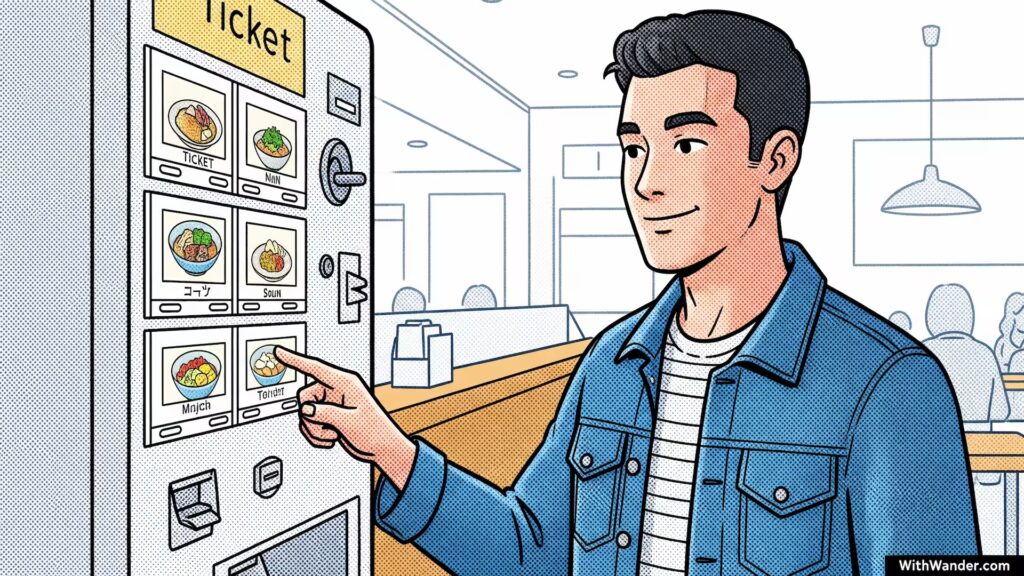
Worrying about ordering food in a new language can be a source of major anxiety. Japan has a brilliant solution: restaurants where you barely have to speak to anyone.
Many ramen, gyudon (beef bowl), and curry spots use ticket machines (kenbaiki – 券売機).
You select your meal from a machine with pictures, insert cash (or now tap your IC card or QR payment like PayPay), and take the printed ticket to a counter or seat.
Some newer locations even have digital tablet systems with English options. The staff takes your ticket, and your food appears a few minutes later.
It’s efficient and perfect for a solo traveler who needs a break from social interaction.
Here are a few chains to look for:
-
Ichiran Ramen
Famous for its solo dining “flavor concentration booths” with 19 Tokyo locations. (Avg. ¥980-¥1,320). You order from a machine and eat in a private cubicle. It’s the ultimate low-interaction meal, open 24/7 at many locations.
-
CoCo Ichibanya
Customizable Japanese curry with English menus and vegetarian options. (Avg. ¥900-¥1,300). Most locations have English touchscreen ordering systems, and you can customize spice levels from 0-10. Perfect for dietary restrictions.
-
Matsuya
Beef bowls (Gyudon) and set meals. (Avg. ¥500-¥900). A classic ticket machine restaurant open 24/7. Now accepts IC cards and QR payments like PayPay at most locations. It’s my top choice for a quick, cheap, and easy meal anytime.
3. Plan Your First Day Around a Single, Calm Neighborhood
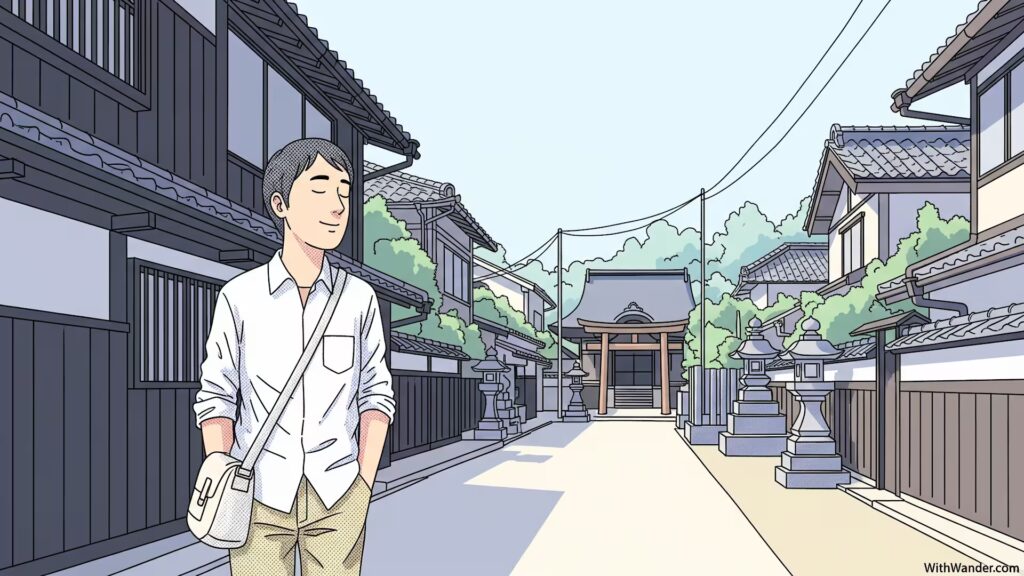
Jumping straight into the scramble of Shibuya Crossing might be tempting, but it can be too much for your first day. Instead, ease yourself into Tokyo by starting somewhere quieter.
Pick a neighborhood known for a more relaxed pace. This allows you to get used to the city’s sights and sounds without the intense pressure of the major hubs. It’s a way to build confidence before you tackle the bigger districts.
Gives your brain time to adjust to a new environment.
You can wander without a strict plan, discovering small shops and temples.
Fewer crowds mean less stress navigating sidewalks and stations.
It’s a more gentle introduction to the culture of Japan.
Can cause immediate sensory overload and anxiety.
The massive stations are difficult to navigate on your first try.
You might feel pressured to “do” things instead of just observing.
It can burn you out on your very first day.
4. Create a “Comfort Zone” Home Base
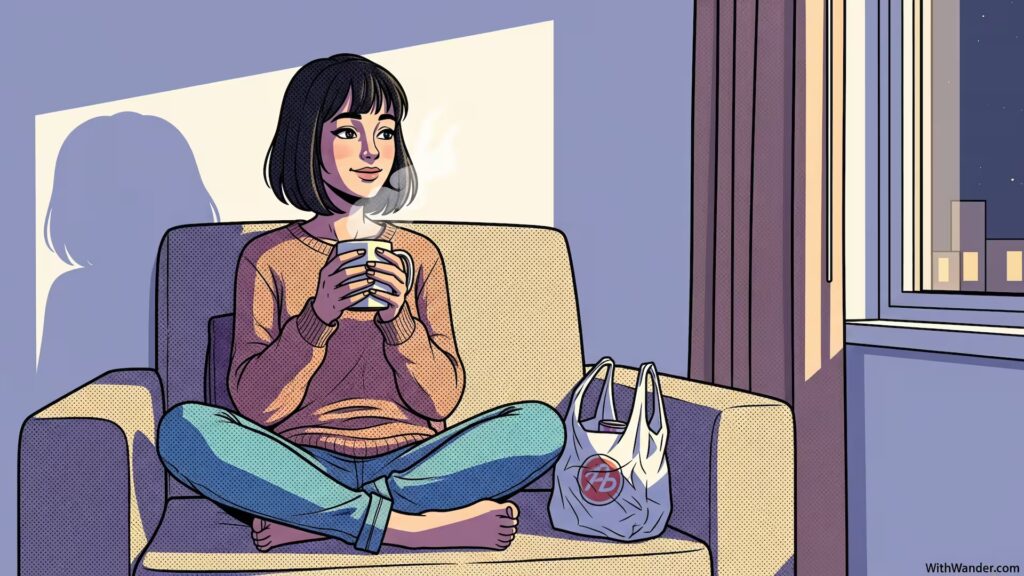
Your accommodation is your sanctuary. When feeling overwhelmed, having a comfortable, simple place to retreat to is a lifesaver.
If you’re looking for budget-friendly options, learning how to stay in Tokyo cheap can also reduce financial stress. Choose your location wisely.
I recommend staying in a slightly more residential area that is still on the Yamanote line, like Ueno, Ebisu, or Meguro.
These places are quieter at night but still offer fantastic access to everything. A good hotel near a convenience store (konbini) is a winning combination.
Konbinis now accept contactless payments, IC cards, and QR codes like PayPay, making them perfect for days when you don’t have the energy to face a restaurant.
Does Japan Get Less Overwhelming After a Few Days?

Yes, it absolutely does. The first 48 hours are the most intense, but your brain is incredibly fast at adapting. What initially seems like incomprehensible chaos soon reveals its underlying patterns and logic.
The feeling of being overwhelmed fades as you build small routines. You learn the jingle for your train line, you find a favorite coffee spot, and you successfully navigate to a temple on your own.
Each small success replaces anxiety with a feeling of accomplishment.
This timeline shows how the feeling often changes:
The main goal is survival, not sightseeing.
Get from point A to point B, find food, and sleep.
A simple onigiri from a FamilyMart is a huge win.
Don’t try to understand everything at once.
You start recognizing station signs and train directions.
Ordering from a ticket machine becomes a familiar skill.
The politeness of the people stands out more than the crowds.
You’re building a mental map of your local area.
You start navigating with confidence, maybe even trying a new subway line.
The energy of Shibuya now feels exciting instead of scary.
You might explore a side street just to see what’s there.
This is when Tokyo truly opens up to you.
How to Deal With Solo Travel Anxiety: Beyond Tokyo
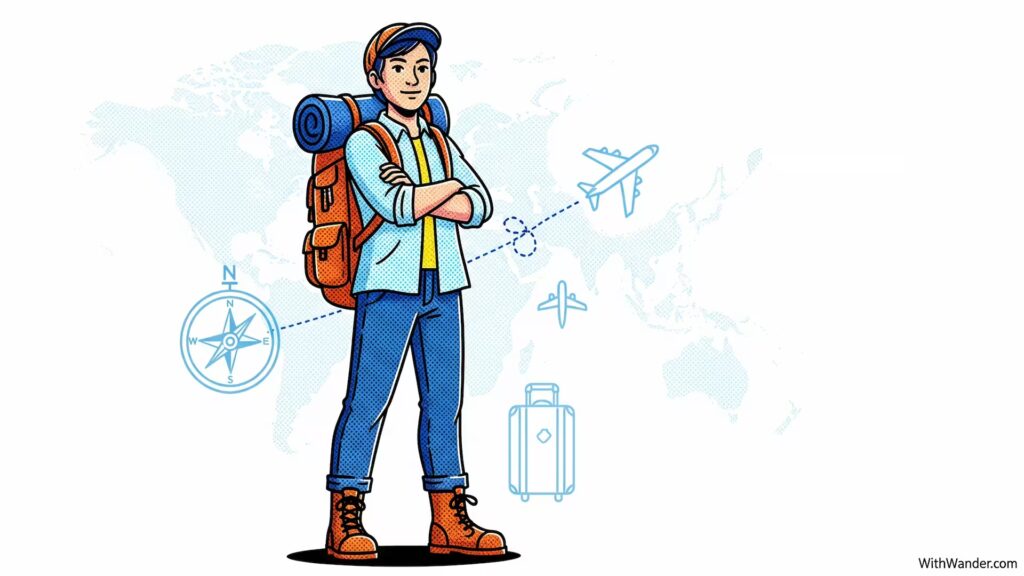
The strategies for managing anxiety in Tokyo are useful anywhere. Whether it’s your first time solo travel Europe or a trip across Asia, if you are prone to feeling overwhelmed, having a mental toolkit can make a big difference.
Here is how to deal with solo travel anxiety in a general sense.
Always have your hotel address saved on your phone in English and local script.
Download Google Maps offline areas for your key destinations – offline functionality is now available for Japan as of 2025.
Knowing you can always get back to your “safe base” is very calming.
There is no shame in ending a day early if you feel drained.
You can’t control train delays, but you can control your departure time.
Start your days early to see popular spots with fewer people.
Carry a portable battery charger so your phone doesn’t die.
Pack a water bottle and snacks to manage hunger and hydration.
Successfully navigating the subway is a huge accomplishment.
Ordering a coffee is a win.
Asking for directions, even with gestures, is a success.
These small boosts build the confidence you need for bigger challenges.
FAQs: Your Questions on Feeling Overwhelmed in Tokyo Solo

Is Tokyo safe for a solo traveler, even if I’m anxious?
Absolutely. Tokyo is one of the safest large cities in the world. The risk of crime is extremely low, which helps reduce one layer of travel stress. People are generally helpful and respectful of personal space. As of October 2025, the US State Department maintains Japan at Level 1 (Exercise Normal Precautions), the lowest risk category.
What’s the best app for navigating Tokyo’s trains?
Google Maps is your best friend. It provides real-time schedules, calculates fares, and even tells you which platform and car number is best for your exit. As of 2025, you can also download offline maps for Japan, which is incredibly useful when you lose signal underground. Just type in your destination, and it will handle the rest.
Can I get by in Tokyo without speaking Japanese?
Yes, you can. Major signs in train stations and tourist areas are in English. Many restaurants have English menus, digital ordering tablets, or pictures you can point to. Learning a few basic phrases like “Sumimasen” (Excuse me) and “Arigato” (Thank you) goes a long way and is appreciated.
What are some key stops on the Yamanote Line for a first-timer?
The Yamanote Line is perfect for beginners. Key stops include Shinjuku (for the government building views), Shibuya (for the famous crossing), Harajuku (for youth culture), Ueno (for its large park and museums), and Akihabara (for electronics and anime culture). Note that JR East will increase fares by 7.1% starting March 2026, with base Yamanote Line fares going from ¥150 to ¥160.
Where exactly do I get a Suica or Pasmo card?
As of October 2025, you can buy Welcome Suica cards (designed for tourists) from JR Travel Service Centers at Narita (NRT) and Haneda (HND) airports or major JR stations. These cost ¥1,500 with no deposit and are valid for 28 days. iPhone users can add Mobile Suica directly to Apple Wallet for maximum convenience. Regular Suica sales resumed in 2025 after the semiconductor shortage.
Is it strange to eat alone in Tokyo?
Not at all. Solo dining is extremely common and perfectly normal in Japan. Many restaurants, especially ramen shops and counter-style eateries like the ones mentioned in the article, are designed specifically for individual diners. You will never feel out of place eating by yourself.
What if a restaurant doesn’t have a ticket machine?
Don’t worry. Many restaurants now have digital tablet ordering systems with English options, or traditional picture menus and plastic food models in their front window. You can simply take the staff outside and point to what you’d like. A simple “Kore o kudasai” (“This one, please”) is all you need. Many places also accept QR code payments like PayPay now.
What’s the best time of day to explore to avoid the biggest crowds?
Early mornings (before 9:00 AM) are fantastic for visiting popular shrines, temples, and parks, as they are often very quiet and peaceful. To avoid transit crowds, try to travel outside of the peak rush hours, which are typically 7:30-9:30 AM and 5:00-7:00 PM on weekdays. The Yamanote Line runs every 2-4 minutes, so you won’t wait long even off-peak.
